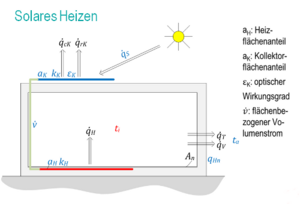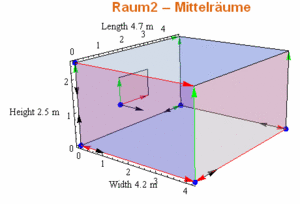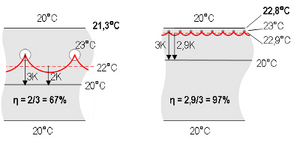model calculations

In preparation for the simulation of a room and system model, a series of model calculations was developed. Various applications for the use of capillary tube mat in buildings were examined here:
- Solar Heating
- External balance (night cooling with storage)
- Internal balance (temperature equalization between the rooms)
- Variable interior insulation
- Variable external insulation
Estimates of the heat flows and the actual room temperature with different parameters could be made with these simplified calculations.
room model

For the numerical simulation, a non-stationary spatial model was created. Therefore a Beukenmodel was formed for each room-enclosing surface. Components can be formed over a wide range of parameters and their temporal and spatial temperature profiles can be examined. Here, realistic weather data (outside temperature, solar radiation) is applied to the simulation room and the thermal behaviour of the room will be analysed.
system model

The spatial models are supplemented by other components, such as thermally activated components (TAB). Then, a control model is developed to demonstrate which energy efficiency, thus which average COP value can be achieved under realistic conditions.
